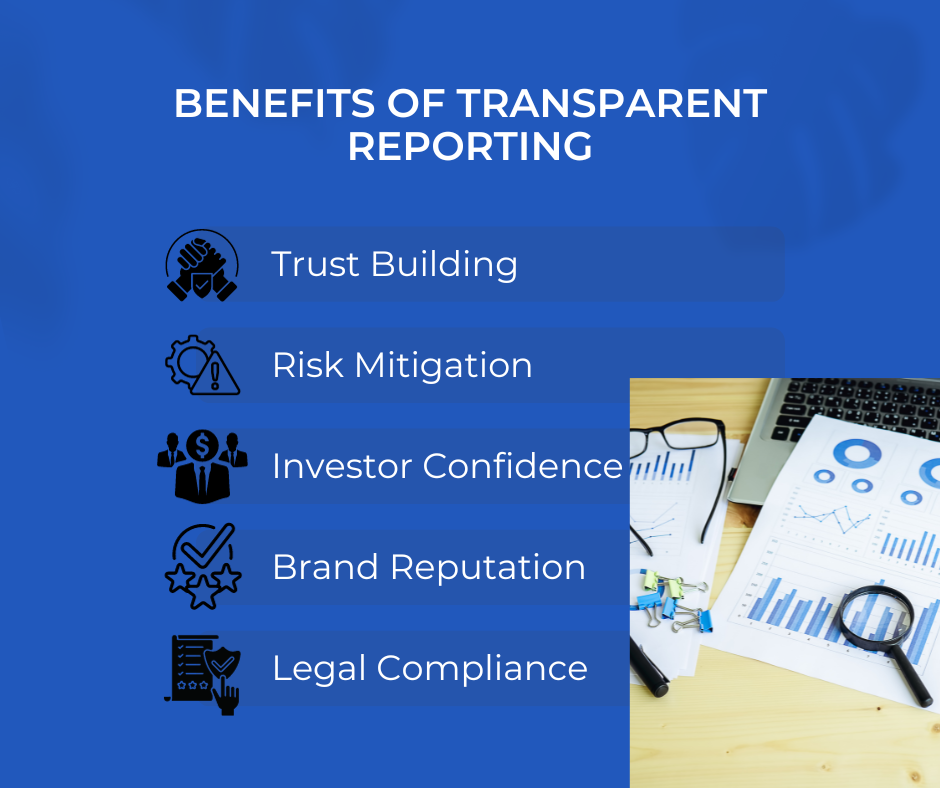Contact: +91 99725 24322 |
Menu
Menu
Quick summary: Discover the top four best carbon accounting practices to help your organization effectively measure, reduce, and report its carbon emissions. Achieve sustainability goals and make a positive impact on the environment.

In today’s world, where organizations are thriving in a changing climate and socially conscious landscape, sustainability has become imperative. Carbon accounting has emerged as a crucial tool in this endeavour allowing businesses to measure, manage and reduce their carbon footprint. To truly drive sustainability and ensure the accuracy of their efforts, organizations need to adopt the best carbon accounting practices.
According to Energy & Climate Intelligence Unit, 53% proportion of the global economy that has set or are intending to set net-zero targets by 2050.
In this blog post, we will delve into the four essential pillars of effective Carbon Accounting: Data Collection and Accuracy, Reporting and Transparency, Setting Reduction targets and Continuous Improvement. Join us on this journey as we explore how these practices can help organizations make informed decisions, reduce their environmental impact and contribute to a more sustainable future.
Carbon Accounting is an important component of sustainability efforts, serving as the compass that guides organizations towards environmental impact and enhanced corporate responsibility. It is the process through which businesses measure and manage their greenhouse gas emissions, allowing them to gain insights into their carbon footprint. By identifying emission sources and quantifying their environmental impact, organizations can make informed decisions on how to reduce their carbon emissions and contribute to a more sustainable future.
Effective carbon accounting practices involve data collection and accuracy, ensuring that organizations have a precise understanding of their emissions. Reporting and transparency come into play by openly communicating these emissions, fostering accountability and building trust among stakeholders. Setting reduction targets provides a clear roadmap for emission reduction, while continuous improvement, backed by life cycle assessment, technology, innovation and supply chain engagement ensures that sustainability remains an ongoing commitment.
Carbon accounting empowers organizations to take tangible steps towards reducing their carbon footprint, aligning their operations with sustainability goals and making meaningful contributions to environmental preservation.
Accurate data collection in carbon accounting is the foundation upon which effective sustainability efforts are built. It serves as the bedrock for understanding an organization’s carbon footprint and emissions profile.
Accurate data provides organizations with a clear picture of their emissions sources and trends. This helps businesses identify areas where emissions can be reduced most effectively and efficiently.
Accurate data is very essential for measuring progress. Organizations need a baseline to determine whether their emissions are increasing or decreasing over time. This helps to track sustainability initiatives.
Precise data allows organizations to allocate resources effectively. It helps in identifying which projects or processes are responsible for most significant emissions, allowing businesses to prioritize reduction efforts and allocate resources where they will have most impact.
Organizations need to know where they stand in terms of emissions to set meaningful emission reduction targets. Without accurate data, targets can be arbitrary and less effective in driving real change.
Transparent reporting plays an important role in carbon accounting as it enhances accountability, fosters trust and enables stakeholders to make informed decisions. It involves openly sharing an organizations’ carbon emissions data, reduction strategies and progress.
Transparent reporting holds organizations accountable for their emissions. When data is publicly available, it becomes more challenging to conceal emissions. This accountability encourages organizations to take carbon reduction seriously.
Reporting transparency engages stakeholders, including employees, investors and customers in an organization’s sustainability journey. It keeps them informed about company’s environmental impact and initiatives, fostering a sense of involvement.
Transparency enables comparative analysis. Stakeholders can assess an organization’s emission and reduction efforts in comparison to industry peers. This benchmarking encourages healthy competition and drives industry-wide improvement.

Setting Carbon Reduction targets is a fundamental step for organizations committed to sustainability and mitigating climate change. These targets provide a clear roadmap for reducing greenhouse gas emissions.
This is the first step in assessing the organization’s current emissions profile. There is a need to understand the source of emissions, including energy use, transportation and supply chain activities.
Collection of accurate and comprehensive emissions data. This includes direct emissions ( Scope 1 ), indirect emissions from energy consumption ( Scope 2 ) and Supply chain emissions (Scope 3)
Involve key stakeholders, including suppliers and customers in the goal setting process. Their insight scan help to identify opportunities for emission reductions.
Consider adopting Science-Based targets (SBTs) that align with the Paris agreement goals. SBTs are grounded in climate science and aim to limit global warming to well below 2˚C.
Ensure that reduction targets are Specific, Measurable, achievable, relevant and Time -bound. This makes them more actionable and easier to track.
Assess the risks and challenges associated with meeting the targets such as technology limitations, regulatory changes or resource constraints.
Implement a robust monitoring and reporting system to track progress towards goals and regularly evaluate and adjust strategies as needed.
Communication reduction targets and progress transparently to stakeholders. This fosters trust and demonstrates commitment.
Continuous Improvement is the cornerstone of effective carbon accounting driving organizations to reduce their carbon footprint and bolster their sustainability efforts.
Life Cycle Assessments play an important role in the quest for continuous improvement. They provide a comprehensive view of a product’s environmental impact considering every stage from production to disposal. By conducting LCAs, organizations can identify hotspots and opportunities for reducing carbon emissions.
For instance, a coffee producer might analyse its entire supply chain to pinpoint areas where emissions can be minimized from farm to cup.
Technology is a catalyst for continuous improvement. Advanced monitoring systems, data analytics and carbon accounting software enable organizations to collect real-time data and optimize their carbon reduction strategies.
For example, IoT sensors on coffee farms can monitor soil health and crop growth, helping farmers make data driven decisions to reduce emissions while improving yield.
Sustainability requires collaboration across the entire supply chain. Engaging suppliers, partners and stakeholders in carbon reduction initiatives is vital.
Coffee companies can work with farmers, roasters and distributors to adopt eco-friendly practices such as renewable energy for processing and transportation.
Organizations must regularly review their carbon reduction strategies, adapt to changing circumstances, and embrace new technologies and practices.
The coffee industry can continuously assess its sustainability initiatives, incorporating feedback from farmers, consumers and environmental experts to refine its approach.
Data Collection and Accuracy
TraceX solutions provide advance data collection tools and technologies that ensure accurate and precise carbon data measurement. By leveraging these solutions, organizations can gather real-time data from various sources, including supply chains and production processes, ensuring that their carbon footprint is assessed.
Reporting and Transparency
TraceX solutions offer robust reporting and analytics features that make it easier for organizations to communicate their carbon emissions data transparently. With clear and customizable reporting templates, stakeholders can easily understand and evaluate the organization’s sustainability performance, fostering trust and credibility.
Setting Reduction Targets
The solutions help organizations set realistic targets by providing data driven insights.
Continuous Improvement
The features support organizations in identifying opportunities for continuous improvement. Through LCA and carbon footprint analysis, organizations can pinpoint areas where carbon emissions can be reduced.
Supply Chain engagement
The software also offers tools for tracking and assessing the sustainability of suppliers and partners. This enables organizations to extend their sustainability efforts throughout the supply chain promoting responsible practices among all stakeholders.
Trace Carbon empowers organizations to make meaningful progress in achieving sustainability goals and reducing their carbon footprint effectively.
As we conclude our exploration of these practices, remember that the impact of your efforts extends far beyond your organization. It influences supply chains, inspires stakeholders and sets a powerful example for others to follow. By integrating these practices into your sustainability strategy, you are not only minimizing your carbon footprint but also contributing to a planet that thrives on innovation, transparency and commitment to a sustainable future.
